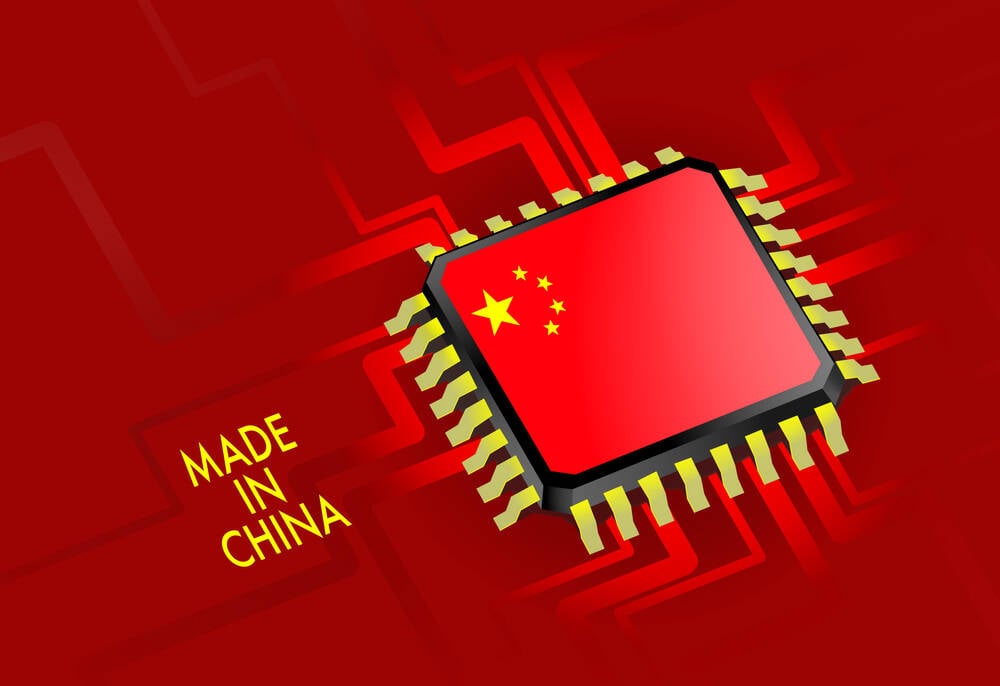China's Loongson Debuts Processor That 'matches Intel Silicon Circa 2020'

Chinese chip houses Loongson and CXMT have debuted products that demonstrate the Middle Kingdom’s increasingly sophisticated semiconductor scene, and an interest for such efforts from major electronics manufacturers.
Loongson's effort is the 3A6000 processor, which uses its own LoongArch CPU instruction set that has characteristics of both the MIPS and RISC-V architectures. The chip has four physical cores and can run eight hardware threads, includes a pair of DDR4 controllers, and runs at between 2.0GHz and 2.5GHz, consuming 38 watts when running at the latter speed.
Loongson has cited benchmark results that it claims place the 3A6000 on par with a comparable product from Intel's 10th-generation Core family, circa 2020.
The chip shop has not revealed which foundry made the processor, but has revealed it's built on a 12/14nm process.
Loongson chair Hu Weiwu suggested the 3A6000 represents a platform that can, over time, match the performance achieved by rival CPU makers. He also announced that over 50 partners have developed products based on the chip, which has found its way into PCs, laptops, storage kit, network security equipment, and industrial control computers.
- Chinese CPUs to feature in servers made by sanctioned Russian company
- China's great CPU hope – Loongson – may be only four years behind Intel
- HPE to offload remaining stake in Chinese joint venture H3C
- GNU Compiler Collection adds support for China's LoongArch CPU family
The Register is not familiar with any of the partners named by Hu. But the launch of the device featured one name most readers will recognize: Asus. The Taiwanese giant provided a motherboard in which the 3A6000 nestled during a demo that pushed the chip to 3.0GHz while cooled by liquid nitrogen.
The presence of Asus suggests Loongson has started to build a significant ecosystem to support the 3A6000. The CPU designer has already built an open source software ecosystem for its products – including support in the Linux kernel.
The chip's performance won't scare Intel nor AMD – not even Qualcomm, which is making a push into the PC market – at least on the technical front. China's encouragement of patriotic shopping habits is another matter.
Policymakers intent on restricting China's access to advanced information technology may feel more unease. While the 3A6000 doesn't have the grunt to make a major contribution to military or national security applications, its on-time debut and promised improvements hint at more to come.
As does the announcement by Chinese chipmaker CXMT that it's started making LPDDR5 memory – making it China's first outfit to do so and placing it alongside the likes of Samsung, Micron, and SK hynix as capable of meeting the spec.
LPDDR5 is a standard, so CXMT's not stolen a march. But by announcing its 6GB and 12GB modules it has shown itself to be a contender.
Chinese consumer electronics giant Xiaomi and Africa's top smartphone maker Transsion are ready to put the memory to work.
Geopolitical concerns aside, CXMT's LPDDR5 may be welcome – silicon-centric analyst firm TrendForce recently forecast price rises of between five and ten percent for the memory class due to tight supply. If CXMT can ramp its production, China cracking an advanced tech just might help the rest of the world. ®
From Chip War To Cloud War: The Next Frontier In Global Tech Competition
The global chip war, characterized by intense competition among nations and corporations for supremacy in semiconductor ... Read more
The High Stakes Of Tech Regulation: Security Risks And Market Dynamics
The influence of tech giants in the global economy continues to grow, raising crucial questions about how to balance sec... Read more
The Tyranny Of Instagram Interiors: Why It's Time To Break Free From Algorithm-Driven Aesthetics
Instagram has become a dominant force in shaping interior design trends, offering a seemingly endless stream of inspirat... Read more
The Data Crunch In AI: Strategies For Sustainability
Exploring solutions to the imminent exhaustion of internet data for AI training.As the artificial intelligence (AI) indu... Read more
Google Abandons Four-Year Effort To Remove Cookies From Chrome Browser
After four years of dedicated effort, Google has decided to abandon its plan to remove third-party cookies from its Chro... Read more
LinkedIn Embraces AI And Gamification To Drive User Engagement And Revenue
In an effort to tackle slowing revenue growth and enhance user engagement, LinkedIn is turning to artificial intelligenc... Read more

